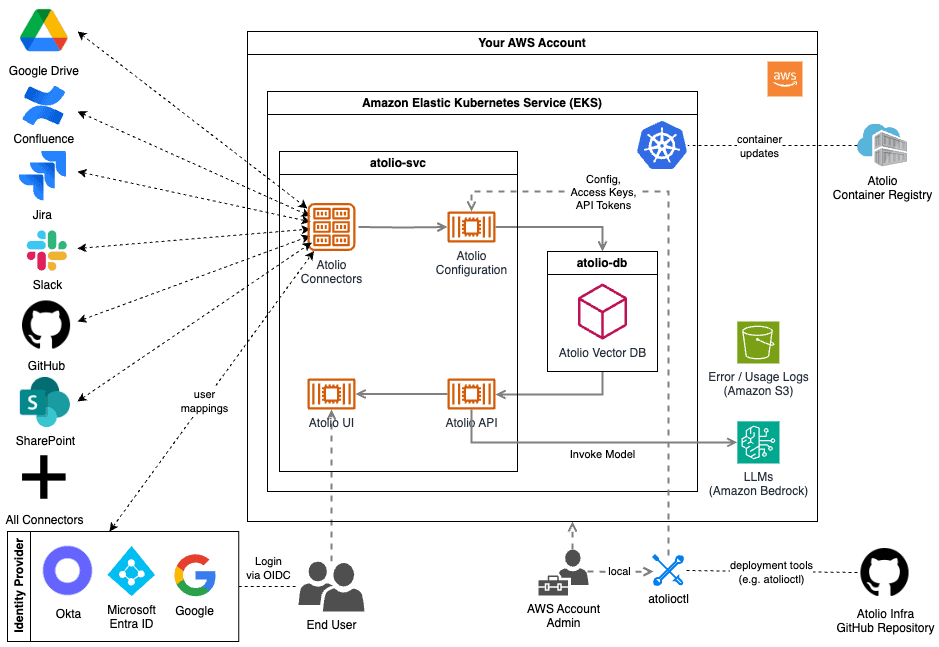Designing a durable, secure, and scalable system on AWS starts with a deceptively simple question: Where should you deploy? The answer depends on AWS Regions, Availability Zones (AZs), latency expectations, compliance requirements, and-of course - your architecture's tolerance for risk and failure.
In this guide, we break down how AWS Regions and AZs work, how to select them wisely, and how to build architectures that take full advantage of AWS's global network using Cloud deployment best practices AWS, AWS cloud security, and AWS networking design principles.
For a complementary hands-on checklist and actionable steps, see our Cloud deployment best practices on VibePanda, which pairs well with the region/AZ guidance in this article.
Understanding AWS Regions and Availability Zones
Before choosing anything, let's get clear on the building blocks.
AWS Regions are fully isolated geographic locations. Each Region contains multiple Availability Zones, typically 3 or more. A Region is your high-level deployment boundary-where your data lives, where your latency targets point, and where your AWS compliance workload must reside.
Availability Zones (AZs) are clusters of data centers within a Region. Each AZ has its own power, networking, and cooling. They are connected with high-bandwidth, low-latency links that support latency optimization AWS strategies.
Think of a Region as the city, and Availability Zones as separate neighborhoods with their own utilities.
Want concrete deployment patterns and a practical checklist? Check AWS Regions & Availability Zones explained for a companion post that dives deeper into AZ-level examples and diagrams.
Why AZs matter
- They allow fault isolation within a Region.
- They enable robust AWS fault tolerance patterns.
- They support high availability and let you deploy workloads on AWS that can survive localized outages.
Factors in Selecting an AWS Region
Choosing a Region isn't about picking the closest one-it's about balancing performance, cost, and risk using Cloud deployment best practices AWS.
1. Latency and user proximity
Low latency directly impacts user experience. Selecting a Region close to your audience enables better latency optimization AWS.
2. Regulatory and compliance constraints
Industries with strict regulation must place data in specific Regions. This is essential for AWS compliance workloads.
3. Service availability
Not all Regions support the same service set. Some of the advanced AWS cloud security and compute services launch first in major Regions.
4. Cost differences
Even identical EC2 instance types vary in cost by Region. Balancing cost with cloud scalability AWS requirements is crucial.
5. Operational maturity & ecosystem
More mature Regions offer better partner ecosystems, higher inter-AZ bandwidth, and stronger support for AWS networking design.
6. Disaster Recovery posture
A complete AWS disaster recovery strategy requires:
- Multi-AZ for availability
- Multi-Region for DR
- Separation to avoid correlated risks
Region and AZ-Aware Architectures
After selecting a Region, design how to spread workloads across AZs using Cloud deployment best practices AWS.
Multi-AZ Architecture
Essential for production-grade reliability.
Benefits:
- Survives AZ failure
- Enhances AWS fault tolerance
- Improves uptime
Common patterns:
- ALB + Auto Scaling Groups across three AZs
- RDS Multi-AZ
- EKS node groups spread across AZs
Multi-Region Architecture
When downtime tolerance is close to zero.
Drivers:
- Compliance & data residency
- Disaster recovery
- Global scale latency
This requires strong AWS disaster recovery strategy planning and sometimes complex replication architectures.
Advanced Infrastructure: Local Zones, Outposts, Wavelength
These AWS extensions further enhance performance and cloud scalability AWS for special workloads.
Checklist for Region Selection
Before committing, verify:
- User proximity for latency optimization AWS
- Compliance alignment for AWS compliance workloads
- Availability of needed features
- Pricing and inter-AZ transfer economics
- Maturity of Region
- Multi-Region needs for your AWS disaster recovery strategy
- Edge features like Local Zones and Outposts
Best Practices and Common Mistakes
Best Practices
- Use three AZs when possible
- Multi-AZ databases for strong AWS fault tolerance
- CloudFront for global latency improvements
- Regular failover testing for availability and DR
- Monitor inter-AZ data transfer impacts on cloud scalability AWS
Common Mistakes
- Picking us-east-1 "just because"
- Single-AZ production deployments
- Ignoring compliance requirements
- Underestimating networking costs in AWS networking design
- Skipping DR planning until it's late
Conclusion
Architecting cloud deployments means understanding Regions, AZs, and how to deploy workloads on AWS safely, securely, and efficiently. By applying Cloud deployment best practices AWS, focusing on AWS cloud security, and optimizing for AWS fault tolerance, you can build resilient and scalable architectures capable of handling growth and unexpected failures.
FAQs
1. How many Availability Zones should I use?
Three whenever possible, two at minimum. This aligns with Cloud deployment best practices AWS and ensures strong AWS fault tolerance.
2. Are all AWS Regions equally reliable?
All meet AWS standards, but operational maturity varies. Older Regions generally offer better AWS networking design and service coverage.
3. How do I choose between multi-Region and multi-AZ?
Multi-AZ is for high availability. Multi-Region supports your broader AWS disaster recovery strategy.
4. Is inter-AZ data transfer free?
No. It's cheaper than inter-Region transfer, but still chargeable and affects cloud scalability AWS cost planning.
5. What Region is best for global users?
There is no single best Region. Use multiple Regions with latency-based routing to achieve better latency optimization AWS.
6. Can Local Zones replace full Regions?
No. Local Zones supplement Regions for ultra-low latency use cases and help deploy workloads on AWS that need metro-level proximity.
7. Should I avoid new AWS Regions?
Not necessarily. Just confirm service availability, maturity, and support for your AWS compliance workload.
8. What's the most common mistake?
Running production workloads in a single AZ - this reduces AWS cloud security, availability, and resilience.
9. How do I plan for DR?
Use cross-Region replication, Route 53 routing policies, backups, and global architectures aligned with your AWS disaster recovery strategy.
10. Do Outposts remove the need for a Region?
No. Outposts extend a Region to your on-premises location but do not replace Regions for Cloud deployment best practices AWS or global scale.
